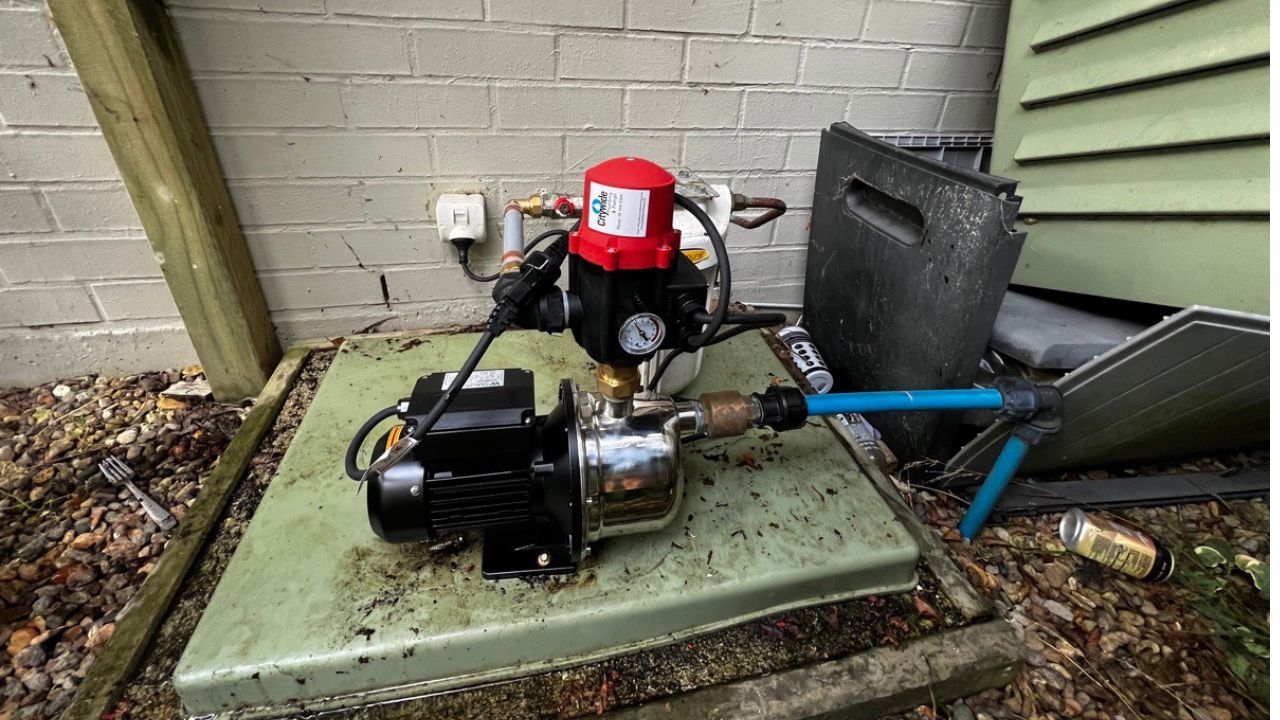Water pumps are the unsung heroes of many New Zealand homes—responsible for ensuring water flows consistently and reliably. But like any mechanical system, a water pump can develop issues over time. If you suspect yours isn’t performing as it should, it’s important to recognise the warning signs early and take action. Below, we’ll outline how to know if your water pump is broken, the common red flags to watch out for, and what you can do about it.
Signs of Low or Inconsistent Water Pressure
Symptom: Turning on a tap and receiving a weak trickle, or experiencing water pressure that fluctuates drastically throughout the day.
Possible Causes:
- A faulty pressure switch or a malfunction within the pump’s motor.
- Blockages or leaks in the plumbing system that reduce water flow.
What to Do:
- Start by checking other taps or fixtures in your home to confirm if the issue is localised or widespread.
- Inspect any visible pipe connections for leaks.
- If low pressure continues, it might be time to call a plumber to assess the pump itself.
2. Unusual Noises or Vibrations
Symptom: You notice loud grinding, rattling, or buzzing sounds coming from your pump, or you feel excessive vibrations.
Possible Causes:
- Worn or damaged bearings inside the motor.
- Debris caught in the impeller (the part of the pump that pushes water).
- Loose mounting bolts or unstable installation.
What to Do:
- Turn off the pump to prevent further damage.
- Listen carefully for where the noise is loudest—this can help diagnose the source.
- If you’re unsure how to inspect it safely, seek professional assistance to avoid voiding warranties or causing more problems.
3. Frequent Tripping of Circuit Breakers
Symptom: The circuit breaker linked to your water pump keeps tripping, or you notice flickering lights when the pump starts.
Possible Causes:
- Electrical short or faulty wiring in the pump motor.
- Overheating motor drawing excessive current.
- Improperly sized pump or an underlying fault in the electrical circuit.
What to Do:
- Refrain from repeatedly resetting a tripped breaker—doing so can risk electrical damage or fire hazards.
- Check if other appliances are causing an overload, or if the pump is the sole culprit.
- Have an electrician or qualified plumber inspect both the wiring and the pump.
4. Pump Not Turning On or Running Continuously
Symptom: The pump won’t start at all, or it runs non-stop without cycling off.
Possible Causes if Pump Won’t Start:
- Dead motor or burned-out components.
- A stuck pressure switch or faulty control relay.
- Possible Causes if Pump Runs Continuously:
- Water pressure never reaches the set cut-off point due to a leak or defective pressure switch.
- The pump is underpowered or worn out, unable to build adequate pressure.
What to Do:
- Check for obvious issues like a blown fuse or a tripped circuit breaker.
- Inspect the pressure gauge (if available) to see if it’s responding.
- If the problem persists, get a professional to diagnose and repair the system—running a damaged pump can worsen the situation.
5. Leaking or Water Pooling Around the Pump
Symptom: Visible water seepage or standing puddles around the pump.
Possible Causes:
- Damaged pump housing or cracked seals.
- Loose pipe fittings and connections.
- Rust or corrosion on older pumps.
What to Do:
- Switch off the pump and carefully dry the area to pinpoint the source of the leak.
- Tighten connections if they’re visibly loose.
- If leaks persist or worsen, a plumber’s expertise is crucial to replace worn parts or perform more in-depth repairs.
6. Overheating or Burning Smells
Symptom: The pump feels extremely hot to the touch, or you notice a burnt odour near the motor.
Possible Causes:
- Inadequate cooling or airflow around the motor.
- Faulty motor windings or mechanical components.
- Pump running for extended periods without rest.
What to Do:
- Turn off the pump immediately to prevent further damage.
- Allow it to cool down and check for any blockages in the air vents.
- Seek professional repair or replacement if overheating recurs.
7. Unexplained Increases in Energy Bills
Symptom: Your electricity usage has spiked, but your water consumption hasn’t changed.
Possible Causes:
- A struggling or malfunctioning pump can draw more power than normal.
- Constantly running pumps never enter standby mode.
What to Do:
- Compare energy bills over a few months to spot unusual patterns.
- Rule out other high-energy appliances.
- If the pump appears to be the culprit, have it inspected—upgrading to a more efficient model or repairing the current one could save you money in the long run.
- When to Call in the Experts
- Although some minor pump issues can be addressed with a bit of troubleshooting, many problems—especially those involving electrical systems—are best left to trained professionals. Attempting complex repairs yourself can lead to further damage or even pose safety risks.
Why Choose Citywide Plumbing?
- Local Knowledge: Our team understands the unique demands placed on pumps in New Zealand homes and businesses.
- Professional Diagnostics: From pressure tests to electrical inspections, we have the tools to pinpoint issues accurately.
- Trusted Repairs & Replacements: We’ll recommend the most cost-effective solution, whether it’s fixing a faulty component or installing a more efficient pump.
Final Takeaway
Knowing if your water pump is broken comes down to staying alert to changes in performance—be it pressure fluctuations, unusual sounds, leaks, or spikes in power usage. Catching signs of trouble early can prevent bigger headaches and higher repair bills down the track.
If you suspect your water pump is on the fritz or want regular maintenance to avoid surprise failures, get in touch with Citywide Plumbing. We’re here to help Kiwis keep their water systems running smoothly, safely, and efficiently year-round.


